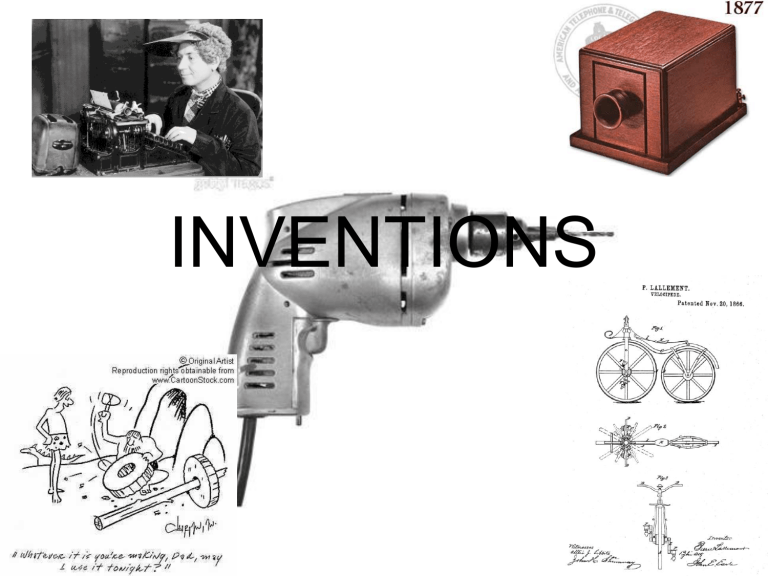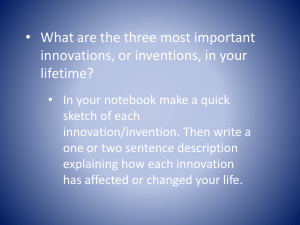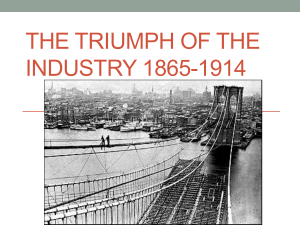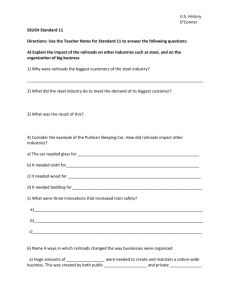
INVENTIONS Patents • License to make, use, or sell an invention 1790-1860, 36,000 issued 1860-1890, 500,000 issued Life in the 1860s • No indoor electric lights • No refrigeration • In 1860, most mail from the East Coast took ten days to reach the Midwest and three weeks to get to the West Coast. A letter from Europe to a person on the frontier could take several months to reach its destination. Life in the 1900s • Power stations across the country began providing electricity for lamps, fans, printing presses, and many other appliances. • By 1900, there were 1.5 million telephones in use all over the country, and Western Union Telegraph was sending roughly 63 million messages. On May 10, 1869, the transcontinental railroad, extending from coast to coast, was finished with the hammering of a golden spike at Promontory Point, Utah. The Railroads • The growth of railroads led to the development of many towns throughout the western part of the United States. • In 1883, the railroads adopted a national system of time zones to improve scheduling. a system we still use today. Railroads and Industry • Railroads played a key role in revolutionizing business and industry – They provided a faster, more practical means of transporting goods. – They lowered the costs of production. – They created national markets. – They provided a model for big business. – They encouraged innovation in other industries. Thomas A. Edison • Setup research lab • created a system for producing and distributing electrical power Edison • Perfected the light bulb Edison • Developed the phonograph Edison • Developed the motion picture camera George Westinghouse • Made electricity safer and less expensive. • Developed a way to transmit it long distances. • More effective air brakes for trains Other Inventions • Electric sewing machine • Refrigerator • elevators (now skyscrapers could be built), etc. The Bessemer Process • In 1856, Henry Bessemer received the first patent- the process made steel production easier and less expensive. • The Bessemer process made possible the mass production of steel. • As a result, a new age of building began. •The Brooklyn Bridge, designed with steel cables suspended from high towers, was made possible by mass production. “Robber Barons” Business leaders built their fortunes by stealing from the public. •They drained the country of its natural resources. • They persuaded public officials to interpret laws in their favor. • They ruthlessly drove their competitors to ruin. • They paid their workers meager wages and forced them to toil under dangerous and unhealthful conditions. “Captains of Industry • The business leaders served their nation in a positive way. • They increased the supply of goods by building factories. • They raised productivity and expanded markets. • They created jobs that enabled many Americans to buy new goods and raise their standard of living. Carnegie Hall • They also created museums, libraries, and universities, many of which still serve the public today.





